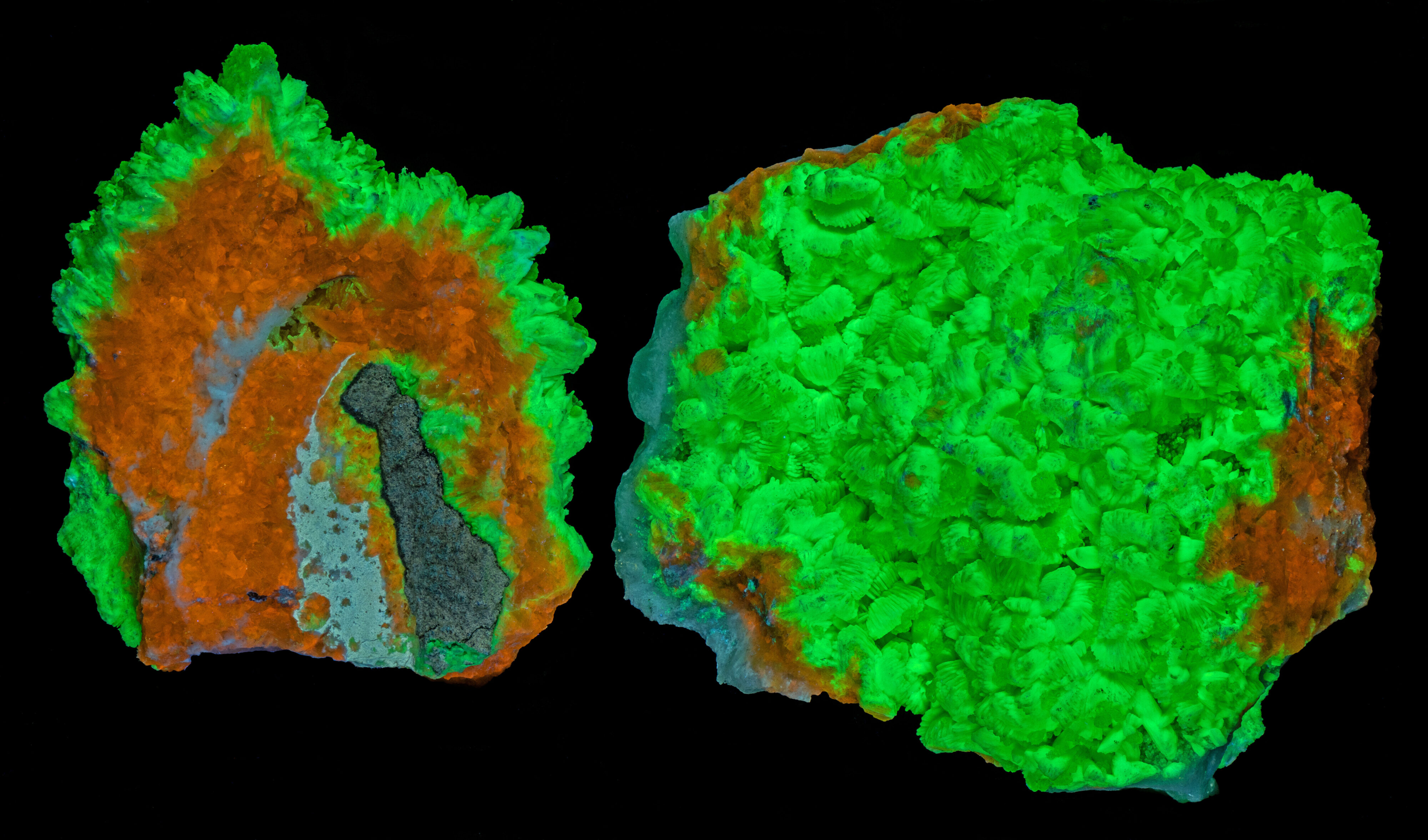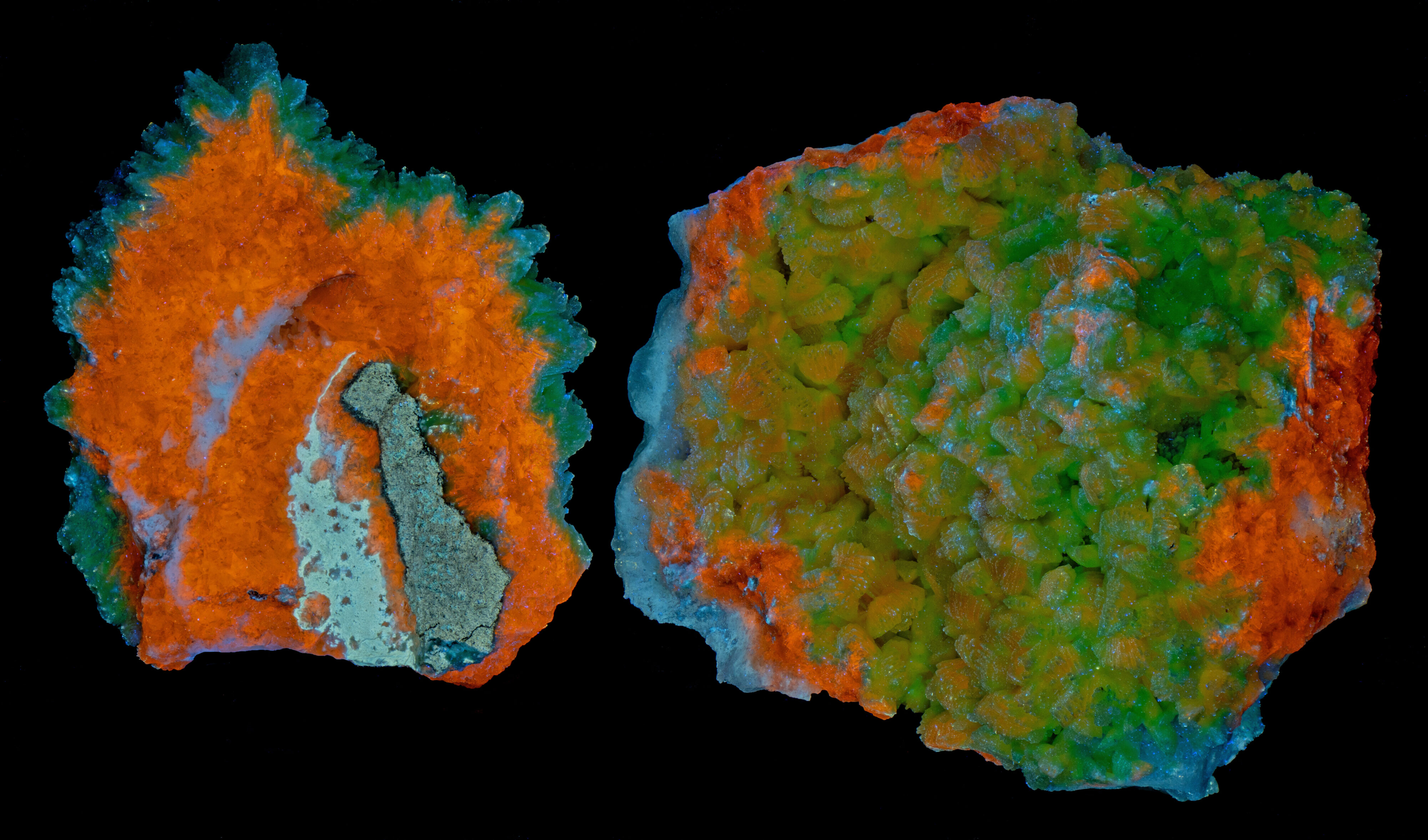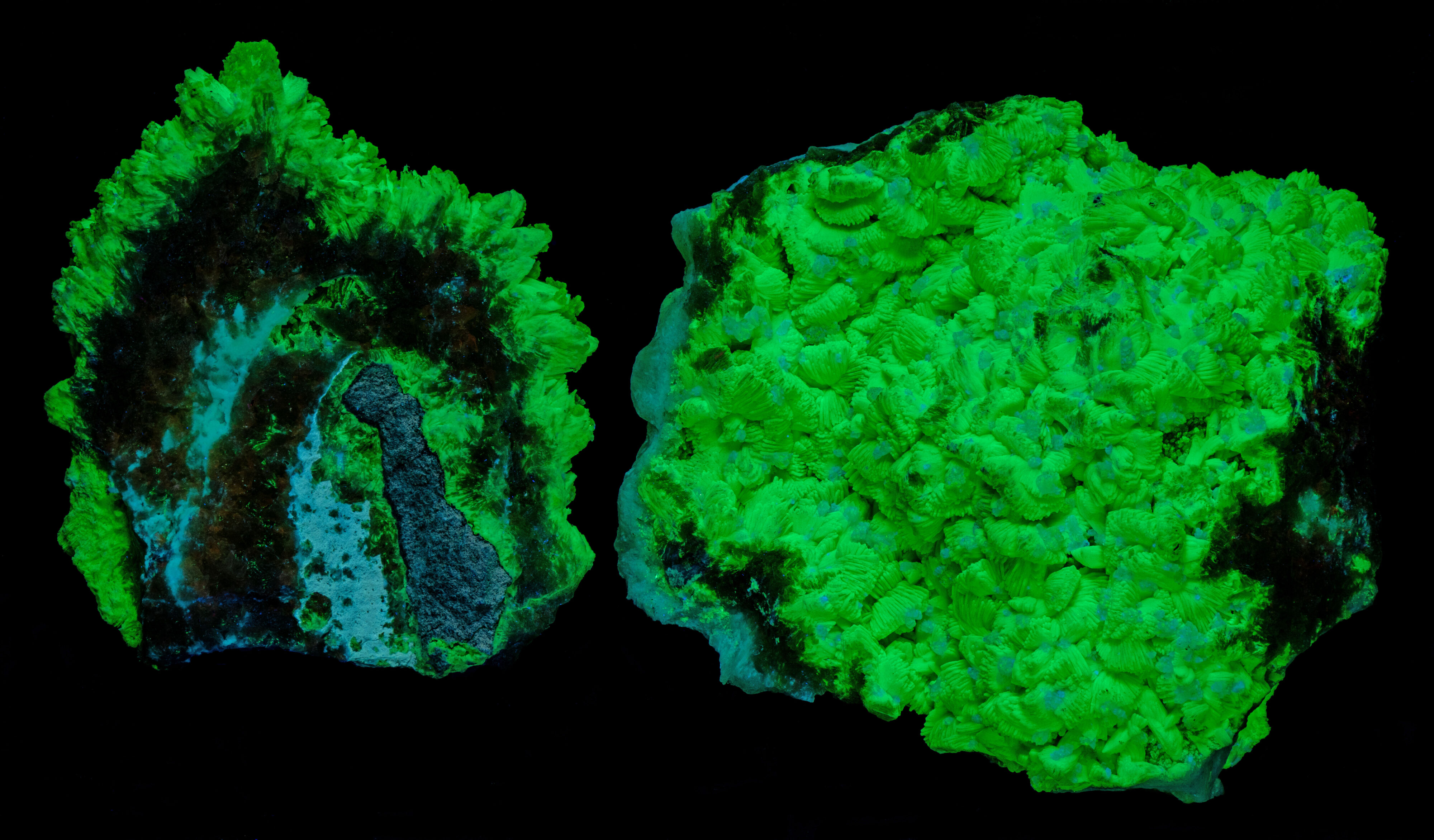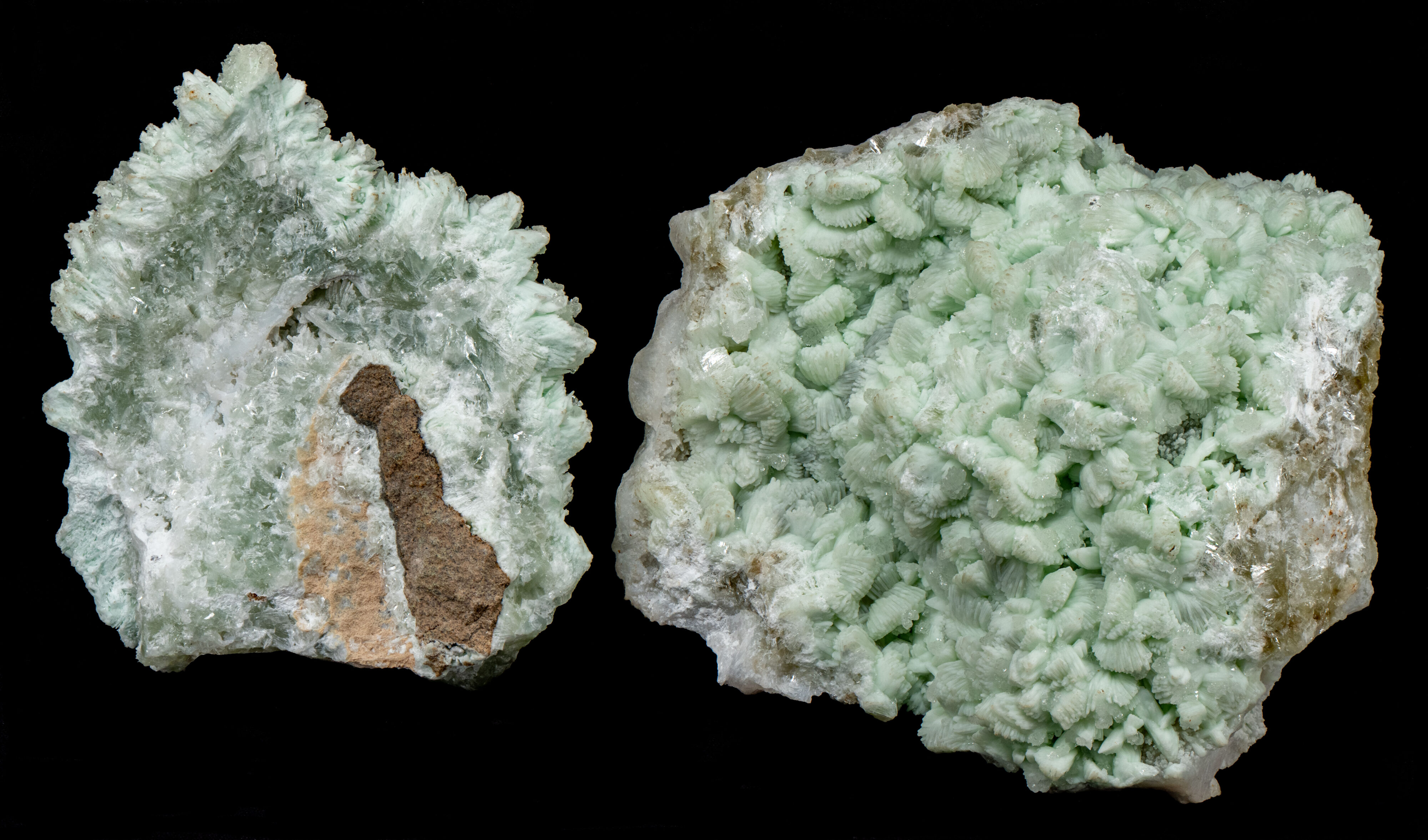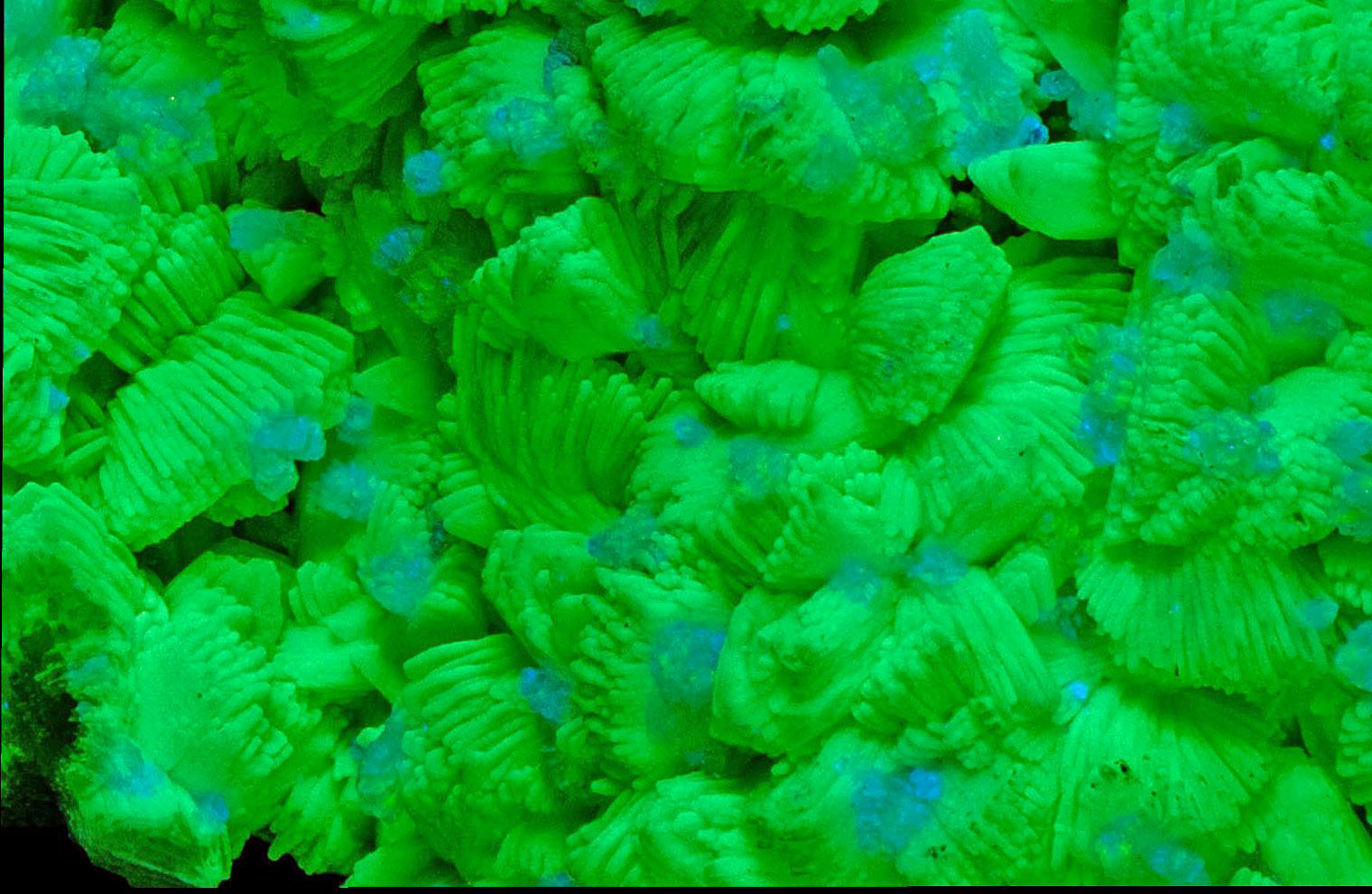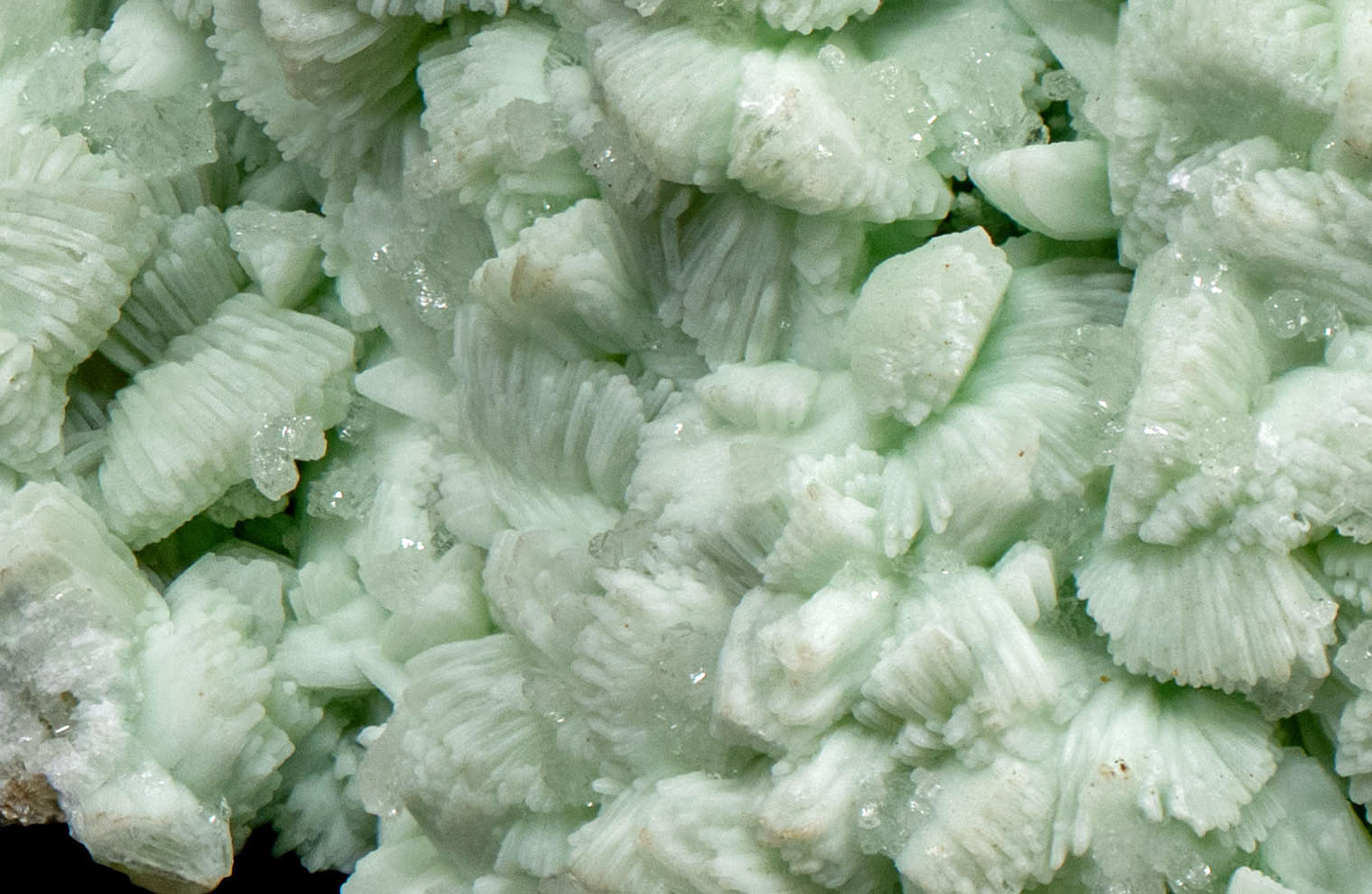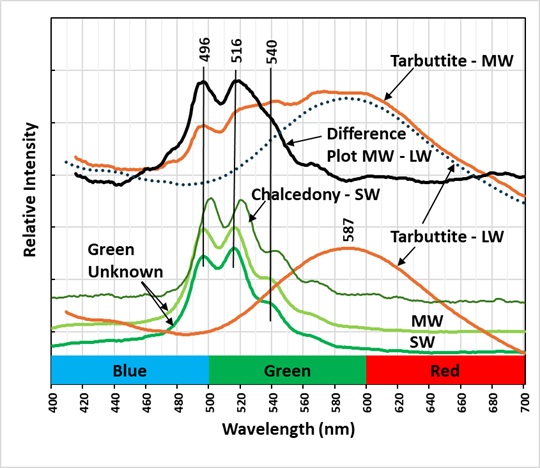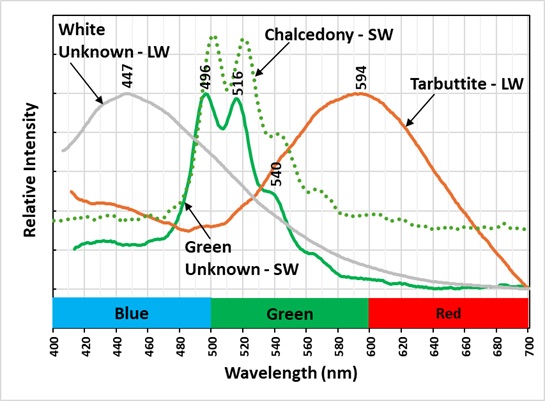Tarbuttite and Other Minerals from the Skorpion Mine, Namibia
Contributed by: Michael Crawford
Date: Jul 15th, 2025
Locality: Skorpion Mine, Rosh Pinah, Oranjemund Constituency, ?Karas Region, Namibia (See on Mindat)
Size: 8 x 9 cm
Description:
These are two specimens from Skorpion Mine, Rosh Pinah, Luderitz District, Karas Region, Namibia with a pale green mineral that fluoresces green, tarbuttite (Zn2(PO4)(OH)) that fluoresces orange, an unknown white mineral that fluoresces white, and scattered crystals of hemimorphite (Zn4Si2O7(OH)2·H2O).
There is a lot of confusing information about the identity of the green fluorescing mineral. Tarbuttite has a pale green daylight color like the green, fluorescent mineral, but tarbuttite fluoresces orange under longwave and midwave UV light. The closeup images shows “sheaves” of crystals that are characteristic of tarbuttite according to images in mindat.org. Some tarbuttite descriptions in mindat describe the sheaves as a pseudomorph of apatite after tarbuttite. A description by Fabre (2015) states analyses found that the pale green sheaves are tarbuttite is coated with hydroxylapatite Ca5(PO4)3(OH) and hemimorphite Zn4Si2O7(OH)2·H2O. There are also some descriptions stating that the tarbuttite has been replaced by fluorapatite Ca5(PO4)3F.
Emission spectra of the green fluorescence show it is activated by uranyl ions. The question is what mineral contains the uranyl activator, tarbuttite, hydroxylapatite, or fluorapatite. Also, there are discussions that chalcedony might be coating the tarbuttite, and it might be the green, fluorescent mineral.
Other minerals associated with tarbuttite are shown in the table below. None contain fluorine like fluorapatite, and the list of minerals found at the Skorpion Mine does not contain any mineral with fluorine. It is likely that “apatite” mineral replacing tarbuttite is hydroxylapatite as found in Fabre’s analyses and not fluorine-bearing fluorapatite.
The emission spectrum of the green fluorescence has sharp peaks at 496 nm, 516 nm and 540 nm. These peaks are shifted to shorter wavelengths compared to uranyl activated chalcedony with peaks at 501 nm, 520 nm and 543 nm. Chalcedony is not the uranyl activated mineral in these specimens.
The specimen on the right has a white mineral with white fluorescence exposed along the edges of the specimen. The white mineral forms a base of the entire specimen with the orange, fluorescent tarbuttite layered on top of it, and the unknown green, fluorescent mineral covering the tarbuttite. The white fluorescence is brightest under longwave light. Under magnification the mineral is composed of clusters of radiating acicular crystals. It might be another type of tarbuttite.
The longwave emission spectrum or tarbuttite is a broad peak with a maximum around 590 nm. This fluorescence might be activated by manganese, but I could not find any literature to confirm this activator. The midwave spectrum of tarbuttite from the left specimen is more complicated than the longwave spectrum. Subtracting the longwave spectrum from the midwave spectrum leaves a residual spectrum that is similar to the spectrum of the green unknown mineral. This suggests that the tarbuttite has two activators, uranyl causing green fluorescence and possibly manganese causing orange fluorescence or it could be a mixture of tarbuttite and hydroxalapatite.
The green, fluorescent mineral is either tarbuttite or hydroxylapatite that has replaced or coated the tarbuttite. More detailed analytic work is needed to confirm the identity of the green, fluorescent mineral.
TABLE
Mineral Formula
Hemimorphite Zn4Si2O7(OH)2·H2O
Smithsonite ZnCO3
Hydrozincite Zn5(CO3)2(OH)6
Scholzite CaZn2(PO4)2·2H2O
Skorpionite Ca3Zn2(PO4)2(CO3)(OH)2·H2O
Hydroxylapatite Ca5(PO4)3(OH)
Fabre, J. 2015, https://www.mindat.org/photo-682857.html
Specimen sizes are 9 cm by 8 cm and 7.5 cm by 6.5 cm
Summary of luminescence responses:
Tarbuttite (Mindat) (RRUFF)
- Fluorescence under Longwave (365nm LED) UV light: Orange
- Fluorescence under Midwave (305nm LED) UV light: Orange

